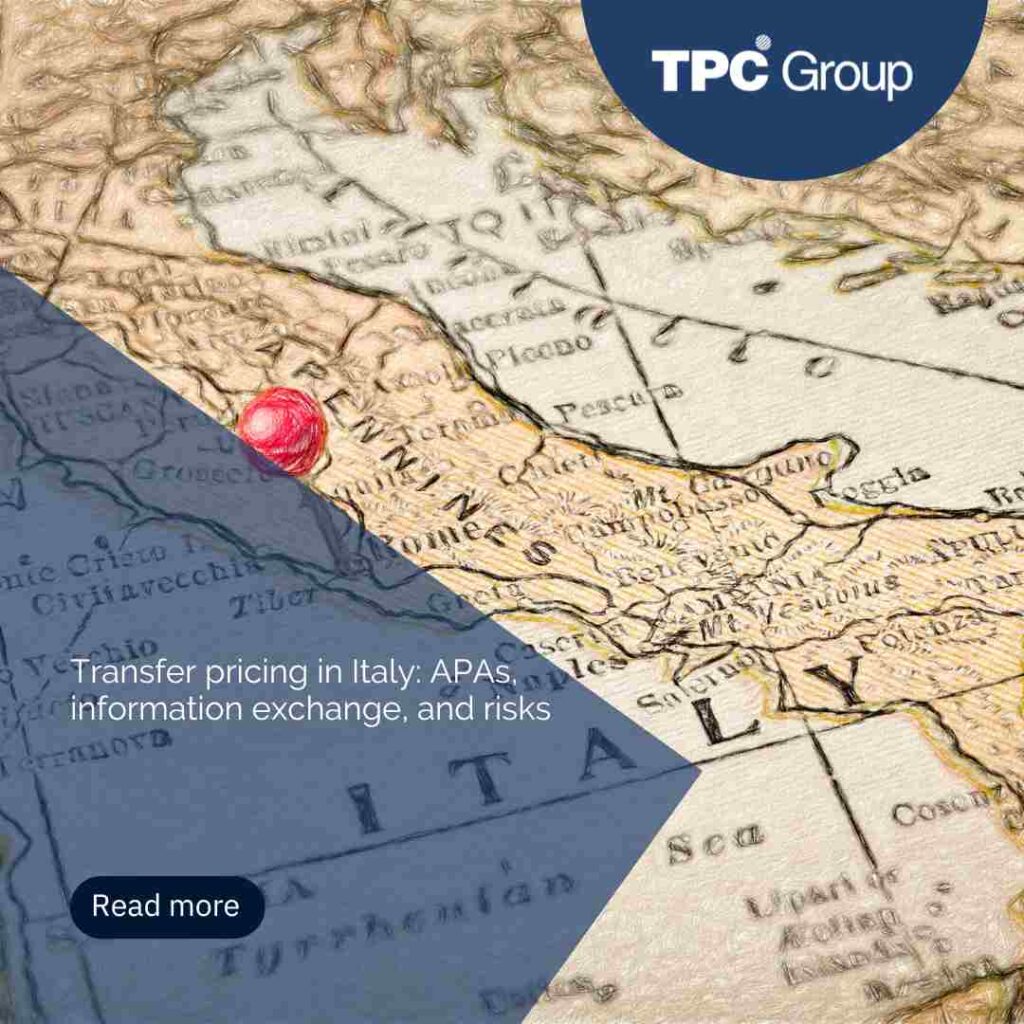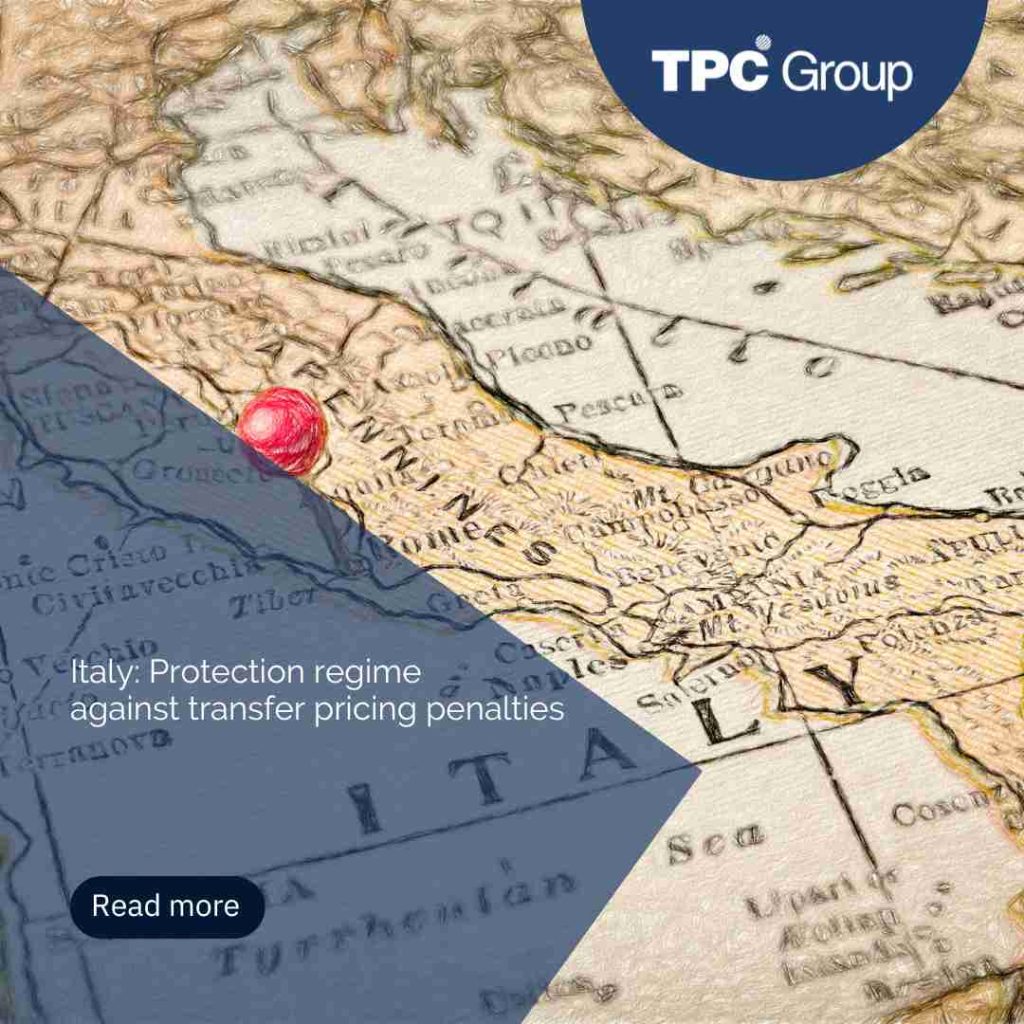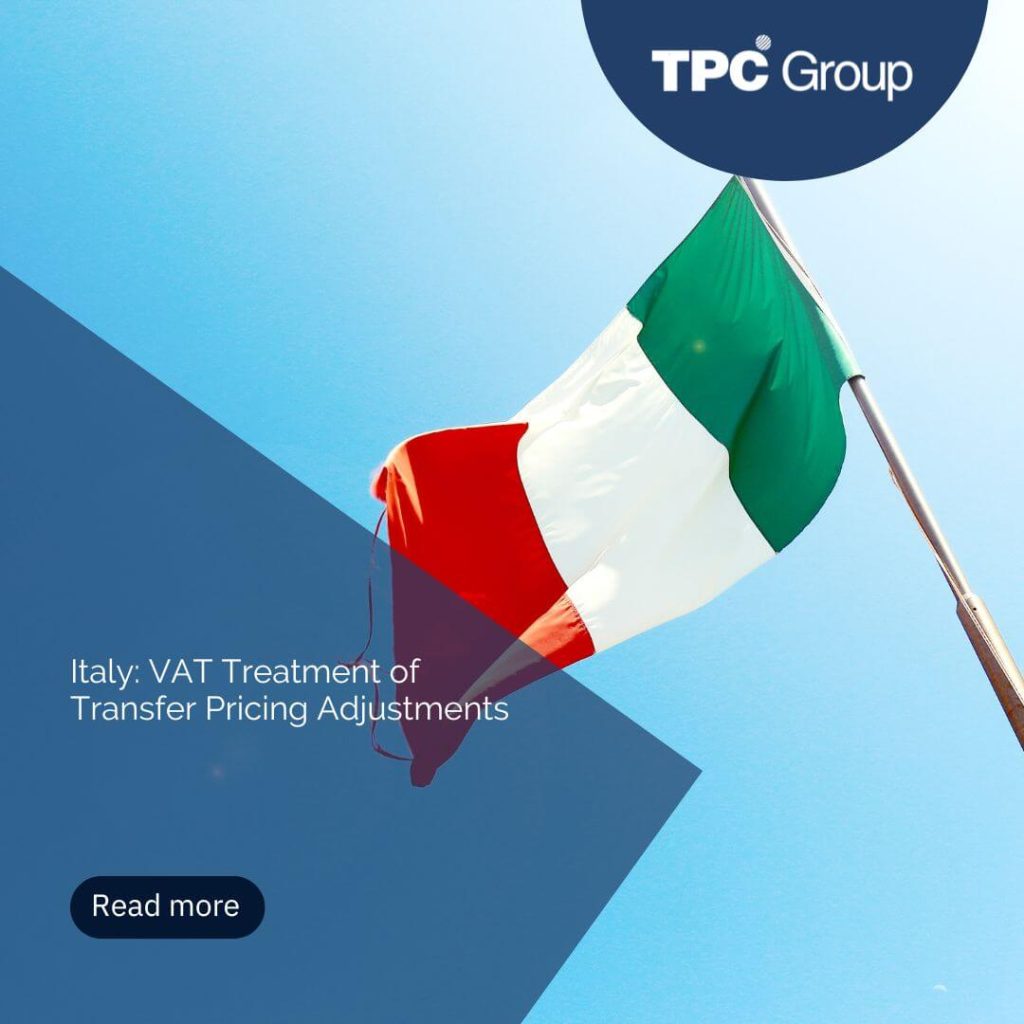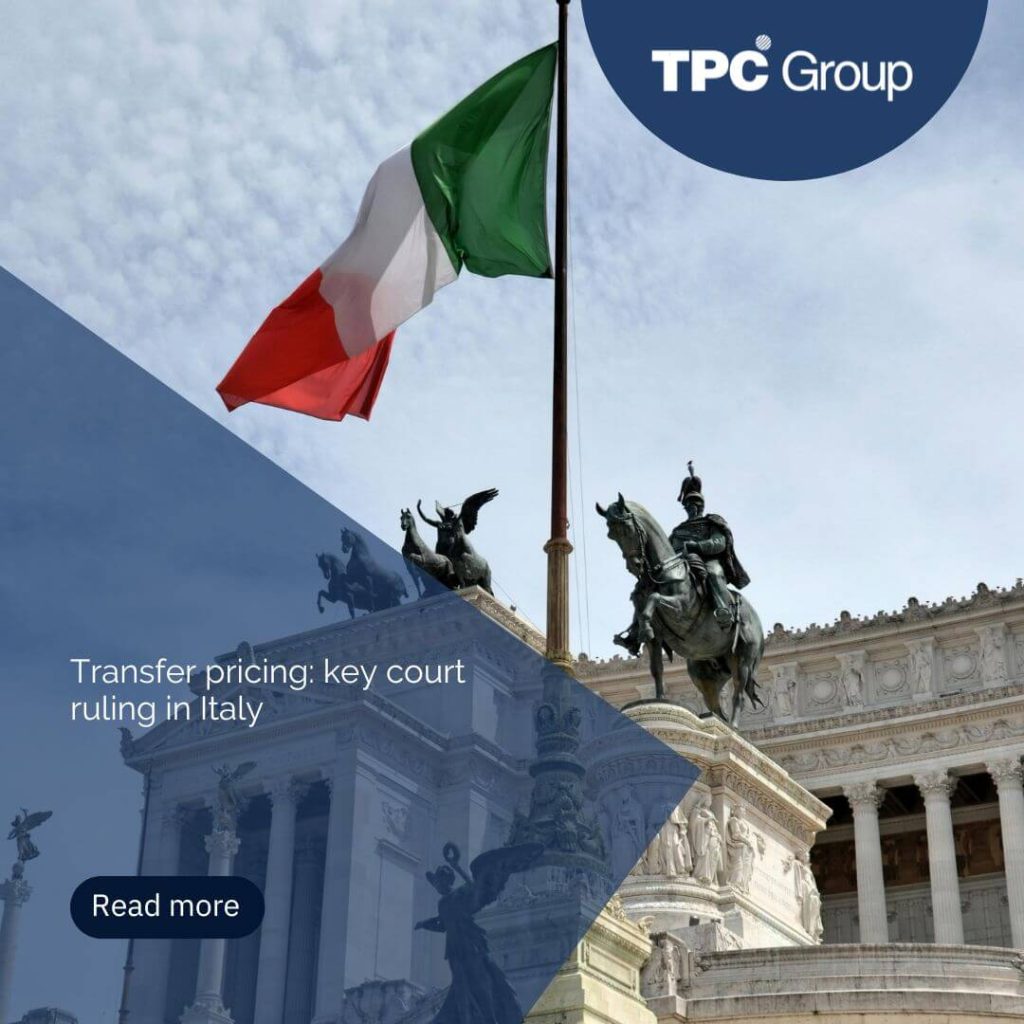Category: Italy

December 22, 2025
Transfer pricing in Italy: APAs, information exchange, and risks

December 5, 2025
Transfer Pricing in Italy: A key precedent on TNMM

October 28, 2025
Italy: Protection regime against transfer pricing penalties

September 3, 2025
Italy: VAT Treatment of Transfer Pricing Adjustments

July 18, 2025
Transfer Pricing: Key Court Ruling in Italy
-
Archives
-
Categories
- News (858)
- Argentina (38)
- Australia (9)
- Bolivia (20)
- Brazil (20)
- Canada (3)
- Chile (41)
- Colombia (52)
- Costa Rica (16)
- Dominican Republic (18)
- Ecuador (15)
- El Salvador (6)
- France (1)
- Germany (2)
- Guatemala (8)
- Honduras (7)
- India (12)
- Italy (7)
- Japan (1)
- Luxembourg (2)
- Malaysia (1)
- Mexico (35)
- Netherlands (4)
- Nicaragua (2)
- Panama (21)
- Paraguay (20)
- Peru (48)
- Poland (1)
- Spain (27)
- United Arab Emirates (3)
- United Kingdom (4)
- United States (19)
- Uruguay (16)
- Venezuela (1)
- Vietnam (1)
- Not index (15)
- Publications (197)
- Audits (3)
- Nias English (2)
- Niif English (25)
- Taxes (44)
- Transfer Pricing (95)
- Uncategorized (1)
- News (858)
-
-
-







